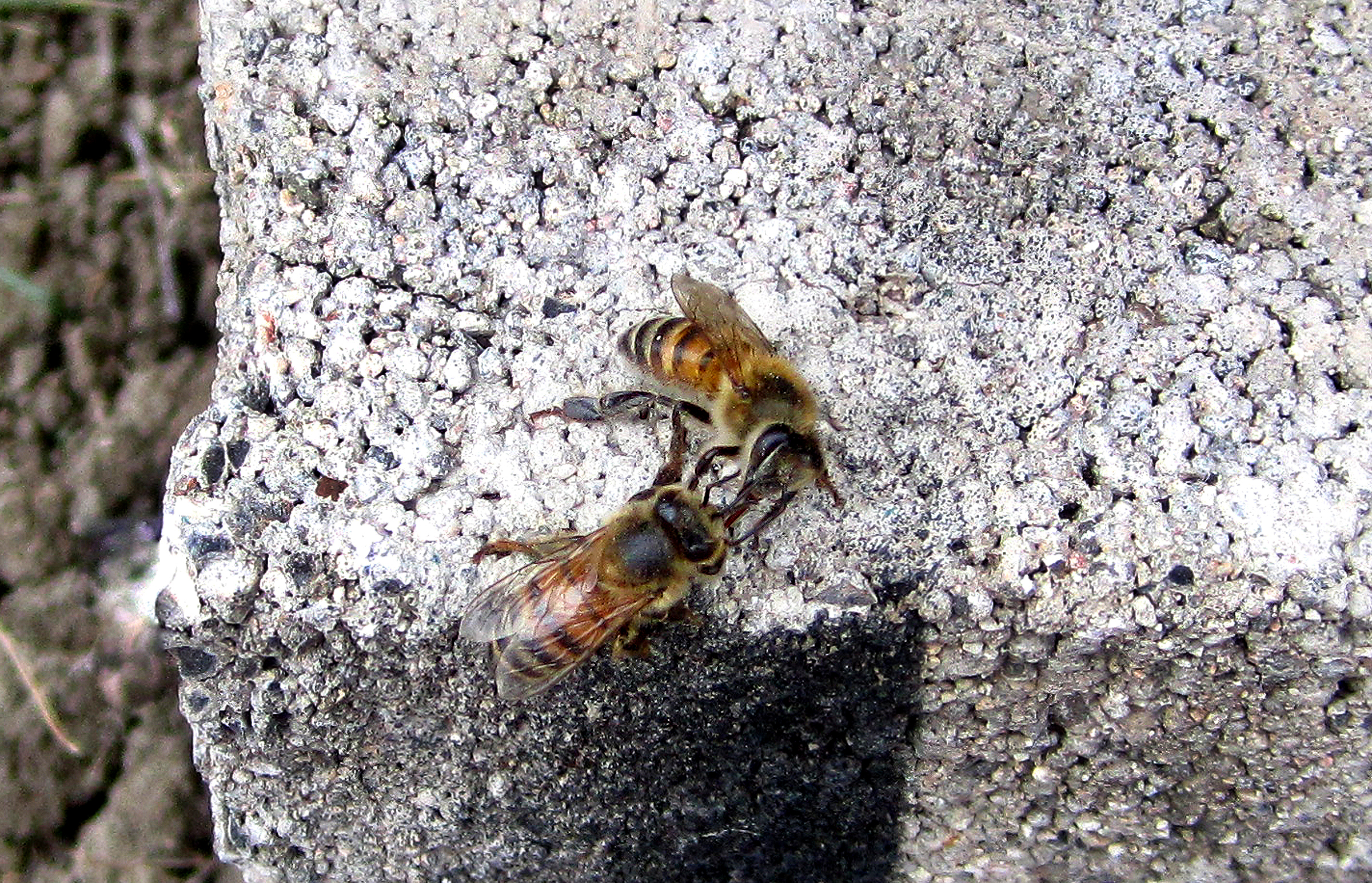Did you know that the sweet worker bee has two stomachs? One for nectar storage and one for her own digestive purposes. Field bees collect nectar using their proboscis and store it in their “honey stomach”. The tongue (proboscis) of a honey bee is much like a straw in that nectar is sucked into their tube-like tongue from the flower. A honey bee can carry up to almost half its weight in nectar. In the photo above look closely and you can see the proboscis of both bees in an exchange of nectar.
The “honey stomach” serves as a storage container until the nectar can be emptied into the hive for processing. However, while the bee is moving from flower to flower the nectar also serves as an energy supply for the foraging bee. The bee travels to many flowers storing nectar until her “honey stomach” is full. The anatomy of a honey bee keeps the stored nectar separate from her digestive system. The digestive system is used for converting nectar into energy for the bees’ use.
When the bee arrives back at the hive, the nectar is passed on to the house bees. The house bees process the nectar internally by adding more enzymes before depositing it into the wax cells. On the way back to the colony, the field bee would have already started the nectar transformation process by adding enzymes to the nectar.
In the following photo you’ll notice two foragers on the edge of the frame, being met by two house bees inside the hive, their heads barely sticking up over the edge of the frame.
 In this photo you can see the proboscis of the house bee on the right poised and ready to take nectar from the foragers.
In this photo you can see the proboscis of the house bee on the right poised and ready to take nectar from the foragers.
 You can see both house bees proboscis ready for the exchange. In this photo you can see the brownish colored tongue of both bees passing the nectar. The exchange takes place, followed by the house bees taking the honey to store in the wax cells and the foragers heading back into the field to collect more nectar.
You can see both house bees proboscis ready for the exchange. In this photo you can see the brownish colored tongue of both bees passing the nectar. The exchange takes place, followed by the house bees taking the honey to store in the wax cells and the foragers heading back into the field to collect more nectar.
 In this picture you see a third forager has arrived to pass on her collected nectar to a house bee. And so the process continues day in and day out. After the exchange is made everyone goes back to their duties until dusk when the foragers return to the hive for the night.
In this picture you see a third forager has arrived to pass on her collected nectar to a house bee. And so the process continues day in and day out. After the exchange is made everyone goes back to their duties until dusk when the foragers return to the hive for the night.




Leave a Reply